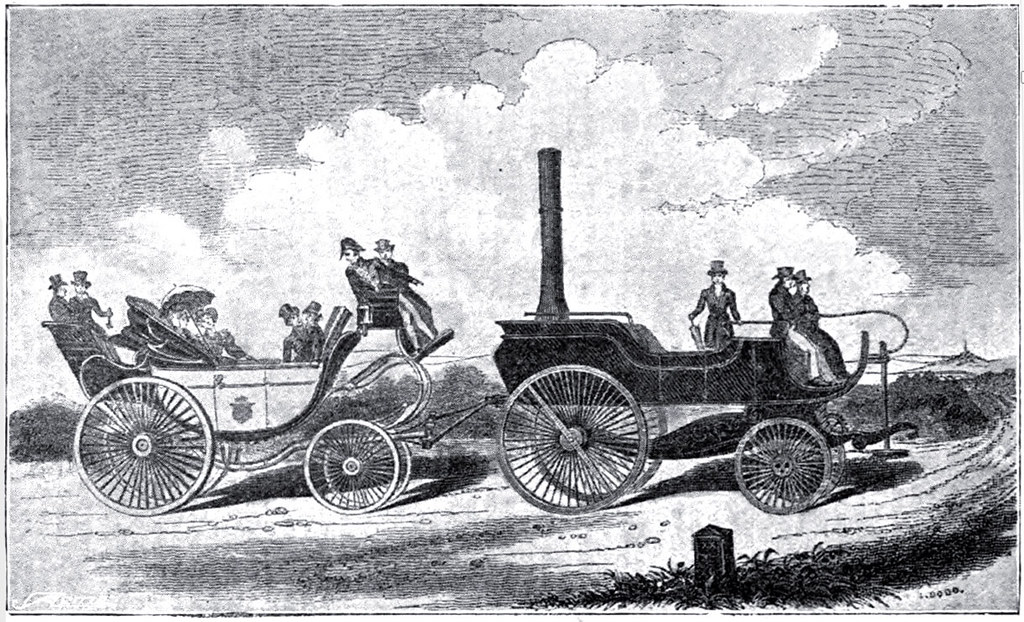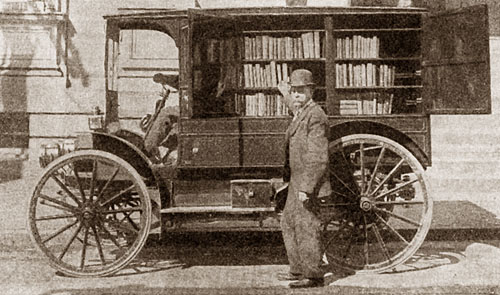A neat solution was a tractor made specifically for the purpose of motorizing horse drawn vehicles. These were designed to replace the front running gear by either permanently attaching to the equipment (thus creating a semi-new one-piece vehicle), or designed to fit to a number of rigs, and so making a tractor-trailer combination. The idea wasn't new – the first railroad locomotives pulled modified stagecoaches. In fact, an early example of a road-going combination tractor-trailer was in commercial service on rural roads in England even before the first American chartered railroad, the Mohawk & Hudson (absorbed by the New York Central in 1853), launched service with their locomotive, the DeWitt Clinton, in 1831 (shown below).

In 1829 Sir Goldsworthy Gurney was experimenting with self-propelled steam carriages. In response to passenger anxiety over riding on top of a potentially explosive boiler, he soon switched to the tractor-trailer system, using a passenger carriage pulled by a separate steam carriage (below).

Dubbed the ‘Gurney Steam Drag,’ two of these were shipped to Glasgow in 1830, where one was eventually tested in service (the boiler on the other exploded when unauthorized persons steamed it up in Gurney’s absence). Soon contractors were buying Gurney steam drags to put in commercial service. Among them, Sir Charles Dance purchased three for rotating service on a Cheltenham-to-Gloucester route, making four runs a day. Unfortunately for the endeavor, jealous owners in the horse-coach trade got Parliament to impose a £2 levy steam carriages per trip, while the toll for horse-drawn carriages remained at 2 shillings. Over 50 other bills placing excessive tolls on steam-carriages were passed in 1831, which eventually shut down the steam-carriage industry throughout England. However, this did not end Sir Charles’ business venture, so devious Cheltenham magistrates clandestinely covered a long section of the road with a foot deep layer of loose gravel, which brought the steam-carriages – and Sir Charles’ business – grinding to a halt.
Sir Goldsworthy Gurney kept his factory open as long as possible, but the withdrawal of contractors coupled with bad press from the Glasgow explosion teamed to bankrupt Gurney, who suffered a £232,000 loss despite selling off his inventory and tools.
See the Wikipedia entry for more info on Sir Goldsworthy Gurney and his inventions.
Next: The De Dion Bouton Steam Bogie

No comments:
Post a Comment